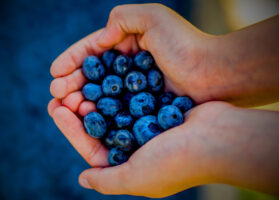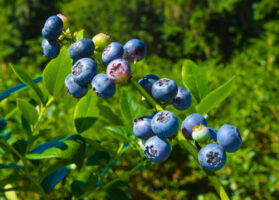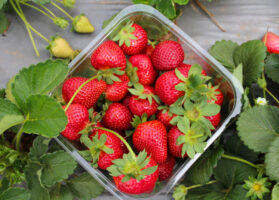Agronometrics Interviews: A Tour of the US Apple Season with United Apple Sales
In this installment of the ‘Agronometrics In Interviews’ series, Sarah Ilyas studies the state of the US Apple season in an exclusive interview with Brett Baker, President and Sales Manager of United Apple Sales. The series is based on interviews with esteemed professionals from the industry, focusing on a specific origin or topic visualizing the market factors that are driving change.
How is the apple season playing out so far in the US and what are your expectations for this season?
I expect that from Western New York, we’re going to have a big apple crop, not our largest ever, but we’re going to have a big apple crop. I expect growth in varieties like Gala and Fuji. I think we’re going to harvest more than we’ve ever harvested in the past. We did have a freeze in May that damaged some of our Honeycrisp. Disappointingly, that volume will be down. But overall, we’re going to have a very nice crop this coming season.

Source: USDA Market News via Agronometrics.
(Agronometrics users can view this chart with live updates here)
How much of an impact did the freeze have on apple production in New York?
It’s too early to be seen. Certainly, it did damage certain varieties in certain locations, we don’t know exactly how many at this time. Again, like I said in the previous question, we do know that Honeycrisp and SnapDragon are showing effects from it, but we have over 50 growers. I haven’t been to all 50 growers’ farms, so I can’t give an exact number as to whether we’re going to be down 10 % or 20 %. We can’t know that until we start seeing some apples get harvested.
How high is demand this season?
We anticipate that we’re going to have a very good season. We anticipate that sales will be exciting. Harvest really won’t start till early September. We know that the peach crop in the United States is damaged. That should push some spotlight earlier in the season to apples, historically, we see peaches stroll strongly into late September. Maybe we’ll see more of a push in a demand for apples in September. Again, there’s a long way to go. It’s too early to say what the demand will be, and quite often it’s dictated by what other opportunities are out there for the consumers. Are peaches extremely expensive? Did strawberries dry up? What other fruits are out there?
How have prices fared this season?
Unfortunately, labor costs continue to be on the rise. Supplies for the farmers continue to be on the rise, whether it’s fuel, whether it’s chemicals, whether it’s fertilizers. Everything is getting more and more expensive. It’s getting more and more expensive every season for our growers to put out a beautiful crop of apples. We know that we need to try from our end to be more efficient each year than we were the previous year so that we can continue to grow or continue to give our growers a sustainable return.

Source: USDA Market News via Agronometrics.
(Agronometrics users can view this chart with live updates here)
Which apple varieties are currently trending and which ones are losing ground?
Honeycrisp continues to trend up. Honeycrisp continues to be everybody’s sweetheart of an apple, everybody’s favorite in the retail store. SnapDragon is an apple that we grow and pack here in our packinghouse, and we saw tremendous growth and tremendously improved sales on SnapDragon last year. So we’re excited about SnapDragon. The same thing can be said for Pink Lady and EverCrisp. We feel that they’re trending in the right direction. McIntosh continues to hold its market share, but varieties that seem to be falling back, in my opinion, would be Cortland, Empire, Macoun, Golden Delicious. We see those varieties on the decline.
What are you doing to achieve sustainability?
As far as sustainability for the environment, within our packing house, we’re utilizing highly efficient lighting. We’re researching actually putting in solar panels on top of our storages to help with the demand on the electric grid. We’re constantly trying to figure out better ways and more efficient ways for transportation. We’re constantly trying to figure out better and more efficient ways to make our packaging in a way that allows us to utilize less cardboard. We’re always trying to figure out how to work smarter, how to work with less waste, and have less byproducts. We’re always trying to figure that out. We’re always trying to figure out how to use less
electricity. We’re always trying to figure out how to use less fuel and heating energy. As I said earlier, we believe in trying to do better for the environment, but the other positive impact, hopefully, is that with having less shrink from our packing, we also were able to provide our growers with a better return. We’re duly motivated because we want to help the environment. We also want to be more profitable and more efficient to help our growers get a better return for their apples.
Can you describe the current export and import landscape? Which countries are you currently exporting to? Which new markets are you excited about?
Well, I just got back myself from a trip to Colombia and Dominican Republic, and I’m very excited about both of those markets. We already export to Israel, Vietnam, a little bit to Colombia. We’re still excited about those. We’re still very proud of the relationships that we have in those countries. Regarding imports, I know that we primarily import from Chile as far as our own company, and I know that Chile has had a tough year as far as their crop as well. They’re struggling to keep up with demand there in Chile. That’s where we’re at as far as the imports.
What are some of the challenges being faced by the industry?
There’s a lot of challenges in any agricultural sector. As far as the Apple category, we’re being challenged by the price of labor continuing to increase. As I talked about sustainability, we’re trying to find ways to automate and mechanize more and more of the duties that we have done in the past with labor, with humans, with machines. Again, labor has become more scarce. It’s also become more expensive. That’s a large challenge that we have. The entire apple industry is trying to figure out new packaging that is more environmentally friendly, whether we can eliminate or reduce the amount of plastics that we’re using. But again, that’s a challenge that the apple industry is faced with, trying to find new packaging that promotes and sells the apples just as well as the existing packaging. We’re currently examining packaging that doesn’t feature the apple, and the consumer doesn’t know what it is, so we need to find better ways to achieve apple sales and be environmentally friendly and sustainable to the environment. Multiple new varieties hitting the market everywhere and crowding shelves is also a challenge, we face the challenge of trying to promote those new varieties and keep apple sales moving as they are. I think any agricultural and produce sector will say that a challenge they have is trying to increase consumption and the apple industry is not devoid of that challenge, we need to increase the amount of apples being consumed by Americans. How do we do that? I don’t have the magic answer, but we need to continue to challenge the scientists and the engineers to come up with new ways that apples can be utilized, new ways that apples can be exciting, we need to come up with new ways to get apples into the hands of kids and even adults that maybe still think an old Red Delicious or an old McIntosh is what an apple is, we need to think of new ways to excite the consumers and drive excitement and demand to the shelves, so those are the challenges that are out there. Additionally, all across the globe, the farmers are getting more and more efficient at growing apples, not only in the United States, so the supply continues to ramp up. As we grow more apples per acre, as we grow more apples per state, again we go back to the challenge of how do we get people to consume more apples that we are growing, that’s always a challenge as well.
In our ‘Interviews’ series, we work to tell impactful stories by collaborating with leaders in the industry. Feel free to take a look at the other articles by clicking here.
All pricing for domestic US produce represents the spot market at Shipping Point (i.e. packing house/climate controlled warehouse, etc.). For imported fruit, the pricing data represents the spot market at Port of Entry.
You can keep track of the markets daily through Agronometrics, a data visualization tool built to help the industry make sense of the huge amounts of data that professionals need to access to make informed decisions. If you found the information and the charts from this article useful, feel free to visit us at www.agronometrics.com where you can easily access these same graphs, or explore the other 21 commodities we currently track
Written by: Sarah Ilyas






